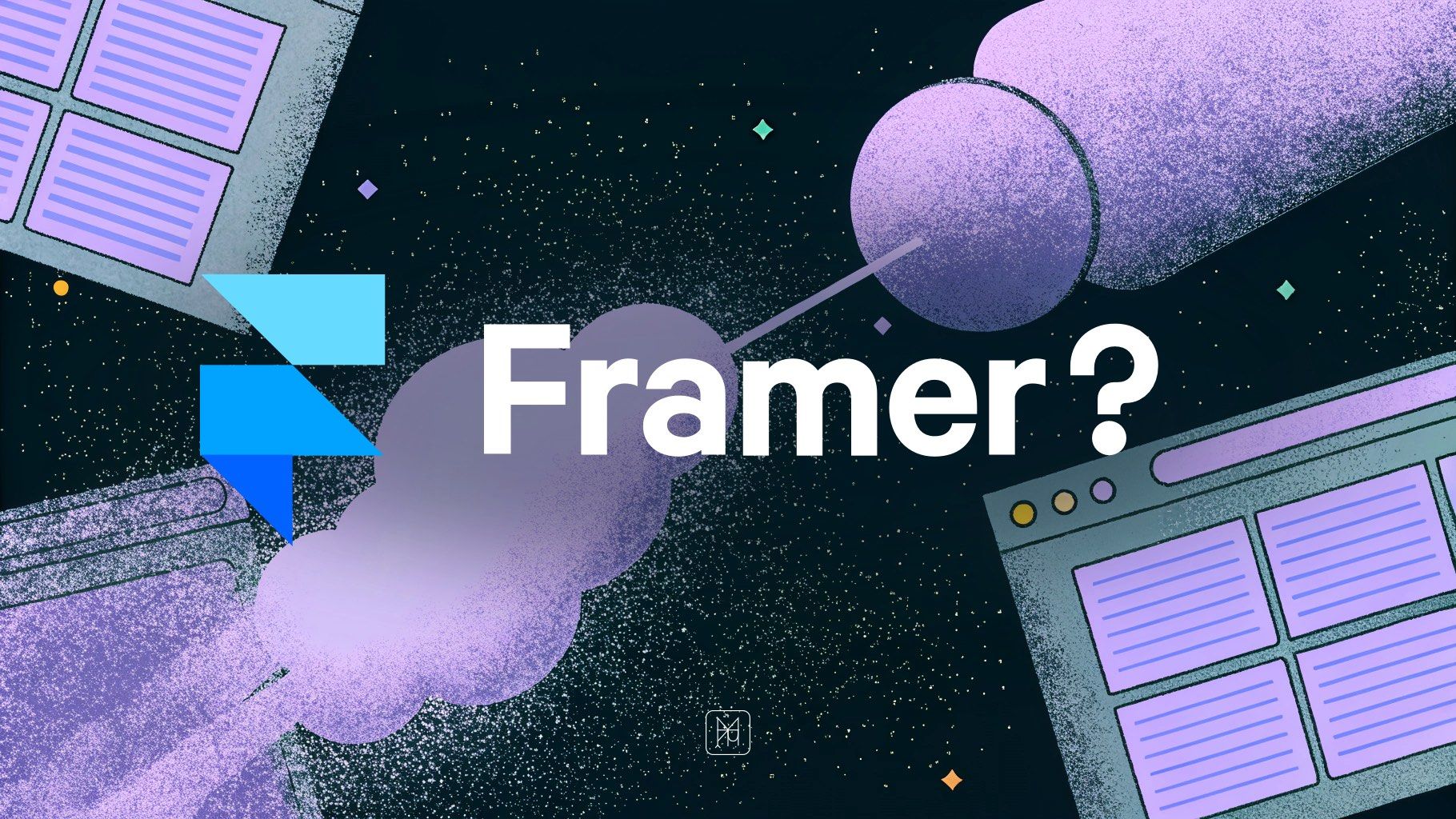Why Your Website Platform Choice Could Be Costing You Thousands in Lost ROI


If you're hiring a designer or agency to build your marketing site, there's a conversation we need to have. And it might save you from a very expensive mistake that's becoming surprisingly common in the startup and SaaS world.
You see, there's this trend happening right now where designers are gravitating toward tools that let them build flashy websites incredibly fast. On the surface, this sounds great for you as a client, right? Faster delivery, lower costs, beautiful animations that make your site look like it belongs on Dribbble.
But here's what nobody's telling you: you might be getting cotton candy when what you really need is a solid meal.
The Hidden Cost of "Fast and Flashy"
Let me explain what I mean. Someone recently described newer design tools as "the sugar of design and marketing," and it perfectly captures what's happening. These platforms—Framer, Figma Sites, and others—let designers create gorgeous sites quickly. They make things that look amazing in a demo. But they're not built for what actually makes you wealthy: sustainable growth, scalability, and consistent ROI over time.
Think about it like this: Would you rather have a website that turns heads for a week, or one that constantly attracts qualified leads for years? Would you prefer something that looks good now but requires a complete rebuild in six months, or something designed to scale with your business?
The designers chasing instant gratification tools aren't thinking about your long-term success. They're optimizing for their portfolio, not your bottom line.
What "Scalability" Actually Means for Your Business
When designers talk about scalability, here's what it means in terms of real dollars and sense:
Can you update your own content? With some platforms, every small change requires hiring a designer or developer. That's not just inconvenient—it's expensive. Imagine paying $150/hour every time you want to update a blog post or tweak a headline. That's not either productive or scalable.
Can you execute SEO strategy? Most of these trendy tools don't support basic technical SEO requirements. No programmatic SEO capabilities. Poor handling of metadata. Sites built entirely in pixels instead of proper responsive units (which Google cares about for accessibility). You're essentially paying someone to build you a beautiful billboard that search engines struggle to read. What's the ROI on a site that doesn't rank?
Can you grow without rebuilding? I've seen companies hit this wall hard. They start with a quick Framer site. Business grows. Marketing team wants to add case studies, create landing pages for different segments, build out a resource library. Suddenly they realize their platform can't handle it. Now they're looking at a complete rebuild—new platform, new designer, months of work, and tens of thousands of dollars. All because they chose the quick option at the start.
The Real Questions to Ask Your Designer
When you're evaluating who to work with on your website, here are the questions that separate professionals from portfolio-builders:
"What happens when we need to scale?" If they say "we'll cross that bridge when we come to it," that's a red flag. Wealthy companies don't build bridges they know they'll have to burn.
"How will this support our SEO strategy?" If they can't explain technical SEO considerations in plain English, they might not understand them at all. And if your designer doesn't understand SEO, you're essentially hiring someone to create an expensive online brochure that nobody will find.
"Can our marketing team make updates without you?" This is crucial. Your website should be an asset that empowers your team to move fast, test constantly, and iterate based on data. If every change requires going back to the designer, you're building a dependency, not an asset.
"What are you building this in and why?" This is where you'll hear either a thoughtful explanation of how the platform aligns with your business goals, or you'll hear "it's what I'm comfortable with" or "it makes really cool animations." Only one of those answers puts your ROI first.
The Cotton Candy Effect: Why Instant Gratification Fails
Here's what typically happens with these quick-build, flashy platforms:
Month 1: Your site launches. It looks incredible. Everyone loves the animations. You feel great about your investment.
Month 3: You want to add some case studies. Your designer says it'll take longer than expected because the platform doesn't handle dynamic content well. You're slightly annoyed but okay.
Month 6: Your marketing team wants to create landing pages for a new campaign. They can't do it themselves—they need the designer. Each page is a custom build. Projects start backing up. Opportunities slip by.
Month 9: You want to implement a content strategy. You realize the CMS is basically non-existent. Every blog post is a manual build. Your content plans grind to a halt.
Month 12: A competitor's site is outranking you on Google. You learn it's partly because your site has technical SEO issues baked into the platform. Fixing it would require a complete rebuild.
This isn't a hypothetical scenario. I've watched this exact pattern play out with multiple companies. They saved a few thousand dollars upfront and lost tens of thousands—sometimes hundreds of thousands—in opportunity cost.
What Wealth-Building Web Design Actually Looks Like
Wealthy companies—the ones that use their websites as actual growth engines—they approach this differently. They choose platforms and designers who understand that a website isn't a project with an end date. It's a living system that needs to evolve.
They work with designers who use tools like Webflow that might take slightly longer to set up initially, but that provide:
- Clean, semantic HTML that search engines love
- Proper accessibility standards (using rem units, proper heading hierarchy, ARIA labels)
- Real CMS capabilities so your team can create, update, and manage content independently
- Class-based systems that let you make design changes across hundreds of pages in minutes
- Margin and spacing controls that any professional developer would consider standard
- CSS variables that actually work, so your brand stays consistent as you scale
These aren't just technical buzzwords. Each one translates directly to either saving money, making money, or both.
The Maturity Question
There's something that separates companies that scale from those that constantly pivot and rebuild: willingness to do things right the first time.
Yes, proper web development takes longer than slapping together a Framer site. Yes, there's a learning curve for your team. Yes, you might not get those mind-blowing scroll animations on day one.
But you know what you do get? A website that works as hard as your team does. A platform that attracts organic traffic constantly. A system that lets you move fast when opportunities arise. A foundation that doesn't need to be rebuilt every time your business evolves.
That's the difference between thinking tactically and thinking strategically. Between optimizing for launch day and optimizing for year three.
Making the Wealth-Building Choice
If you're hiring a designer and they're pitching you on how fast they can deliver or how flashy the animations will be, ask them this: "How will this help us make more money next year?"
If they can't answer that question with specifics about conversion optimization, SEO strategy, marketing operations, and scalability, you're talking to someone who's focused on their creative portfolio, not your business wealth.
The right designer will be honest with you. They'll tell you that proper web development isn't instant gratification. They'll walk you through why certain platforms align with your growth goals and others don't. They'll design systems, not just screens. And they'll make recommendations that prioritize your ROI over their timeline.
Because here's the truth: Your website is an investment. And like any investment, you can chase quick wins, or you can build something that compounds over time. Companies that understand this—that choose substance over flash, that build with scalability in mind—those are the ones that turn their websites into wealth-generating machines.
The others? They're the ones constantly rebuilding, constantly frustrated, and constantly wondering why their competitors are outpacing them online.
What to Do Next
If you're about to start a website project, take a beat. Ask the tough questions. Make sure your designer is aligned with your business goals, not just their aesthetic preferences. Make sure they understand that you're not looking for a pretty site—you're looking for an asset that generates ROI constantly, year after year.
And if they try to sell you on the cotton candy? Maybe it's time to find someone who knows how to cook a proper meal.
Building a website that actually drives business growth? Let's talk about platforms and approaches that prioritize your ROI over design trends.